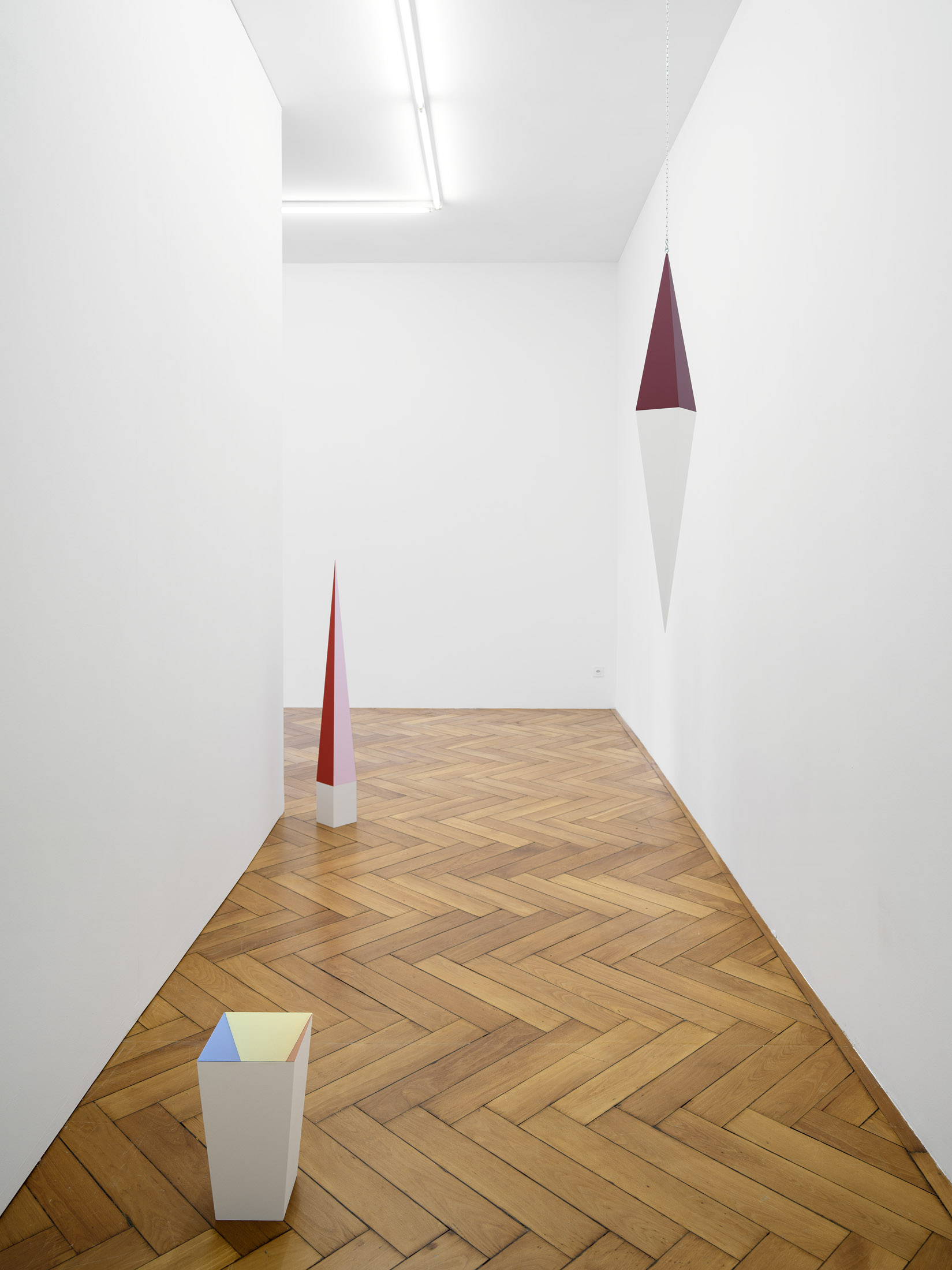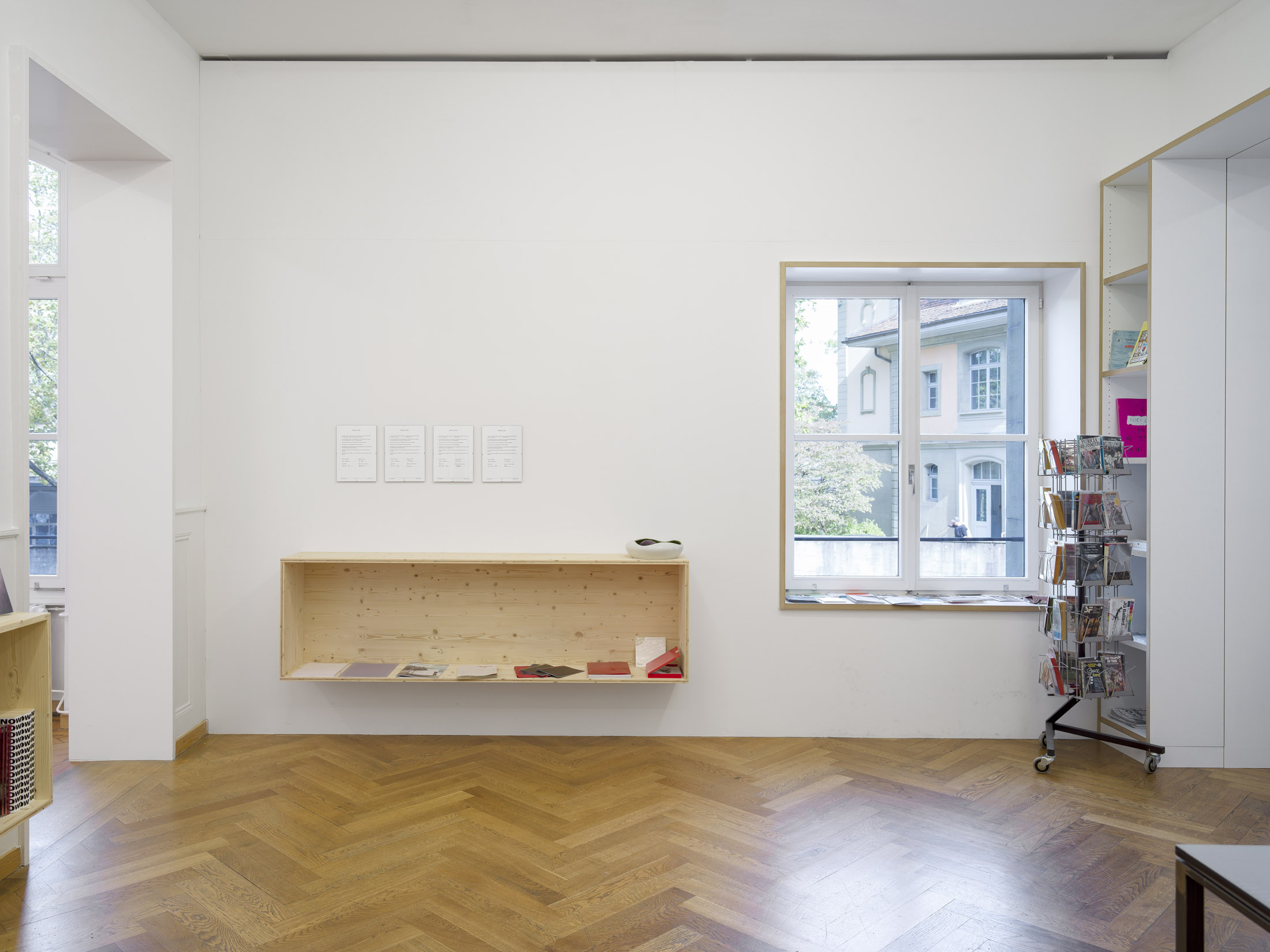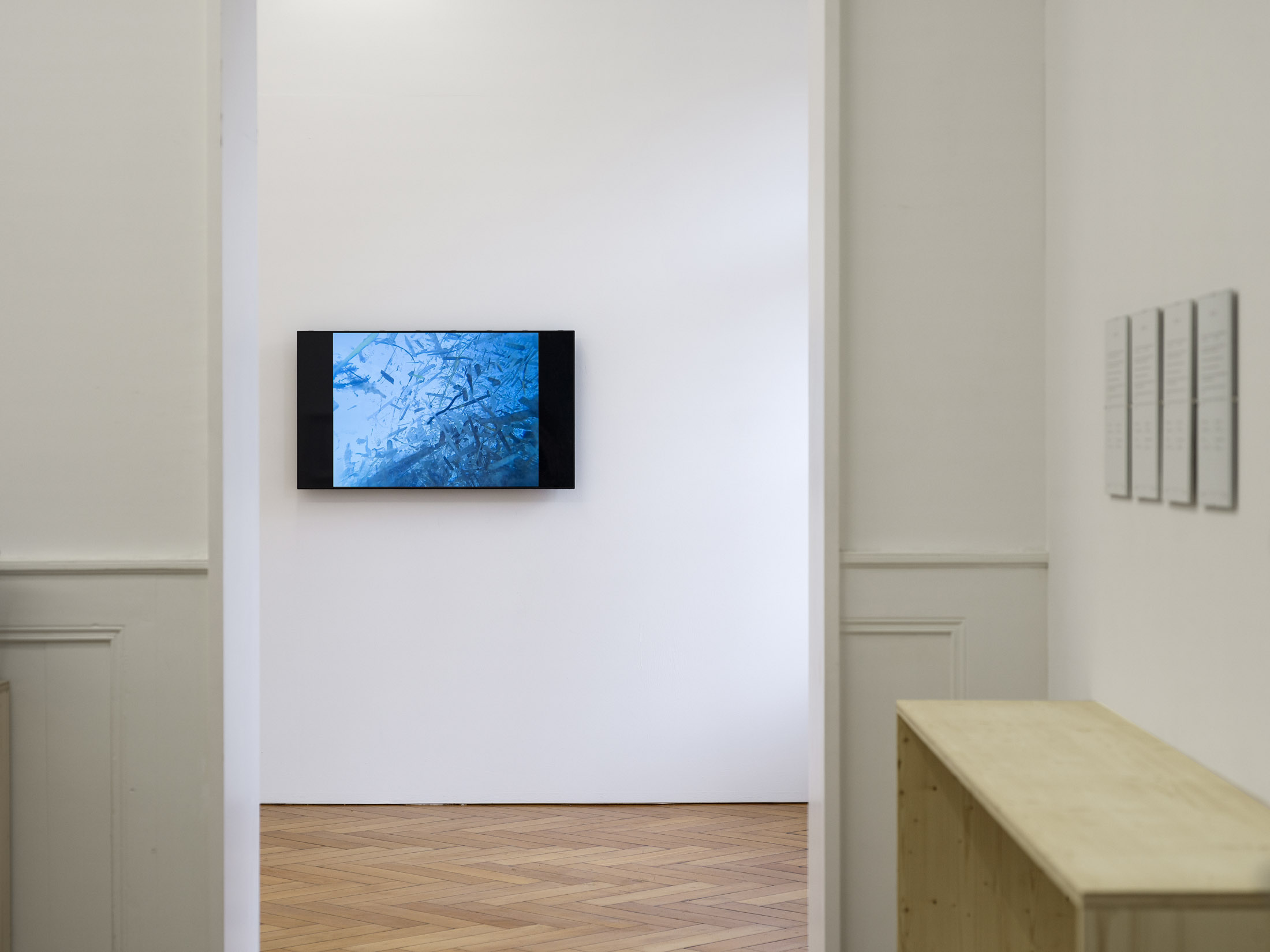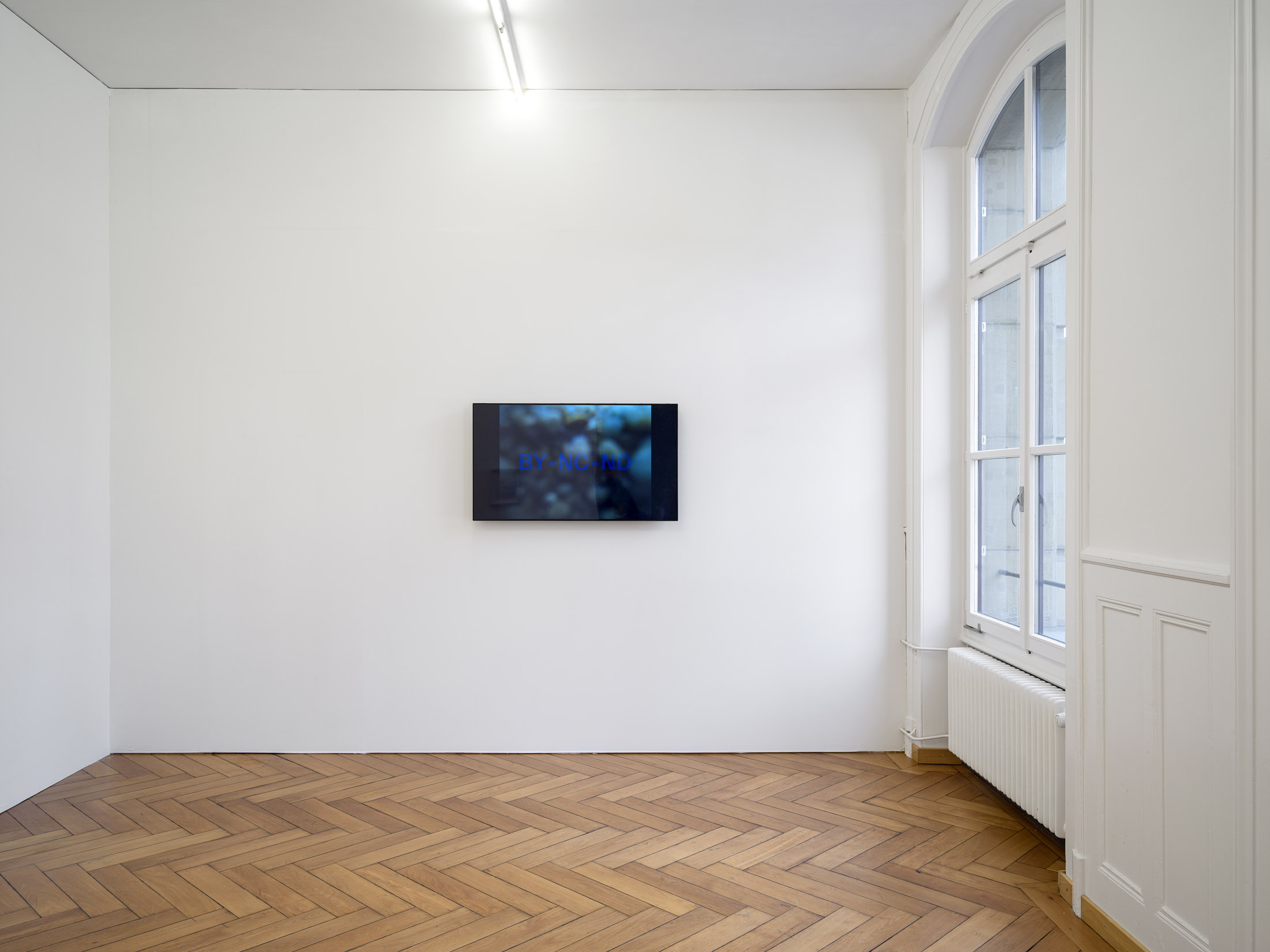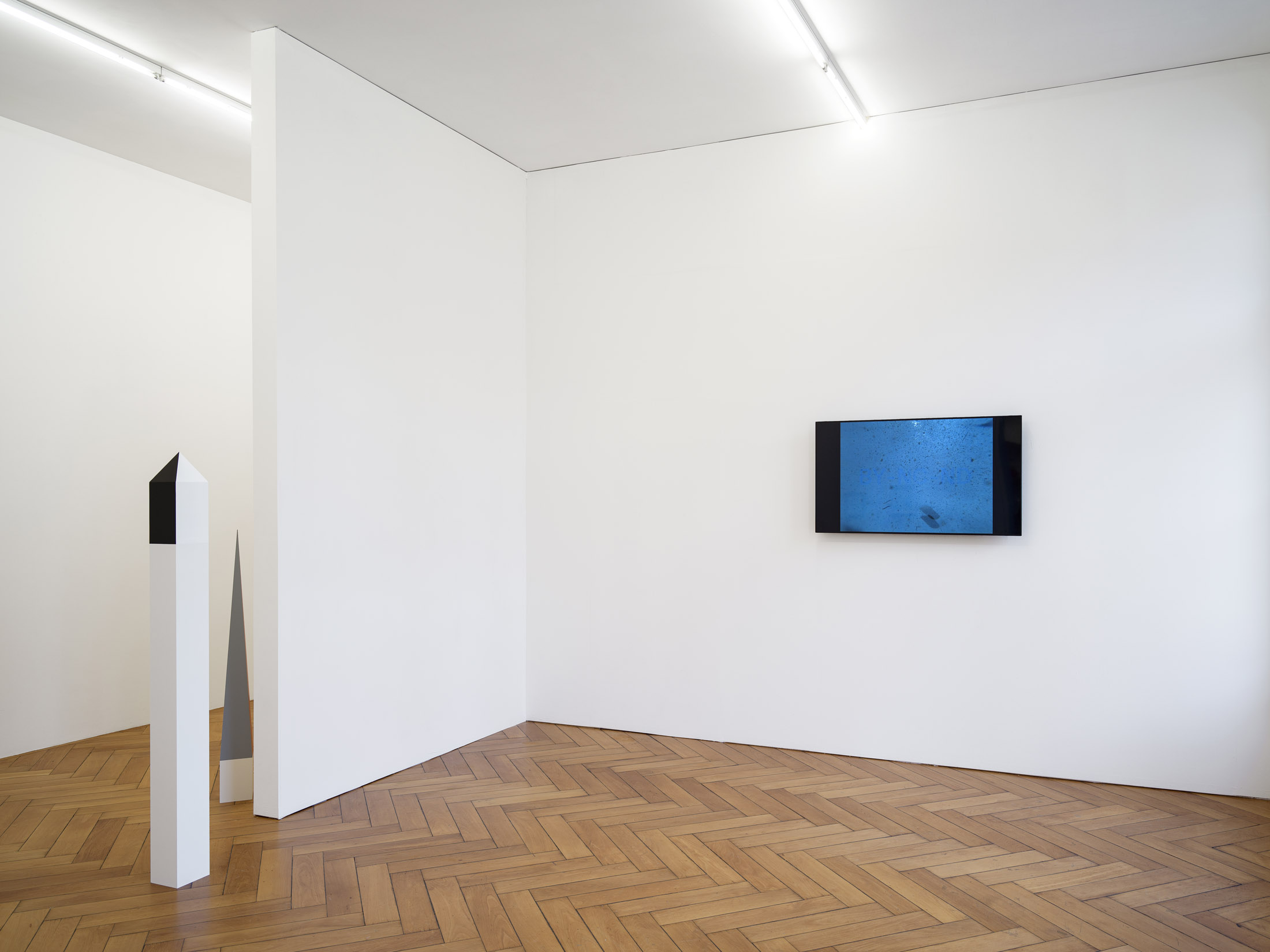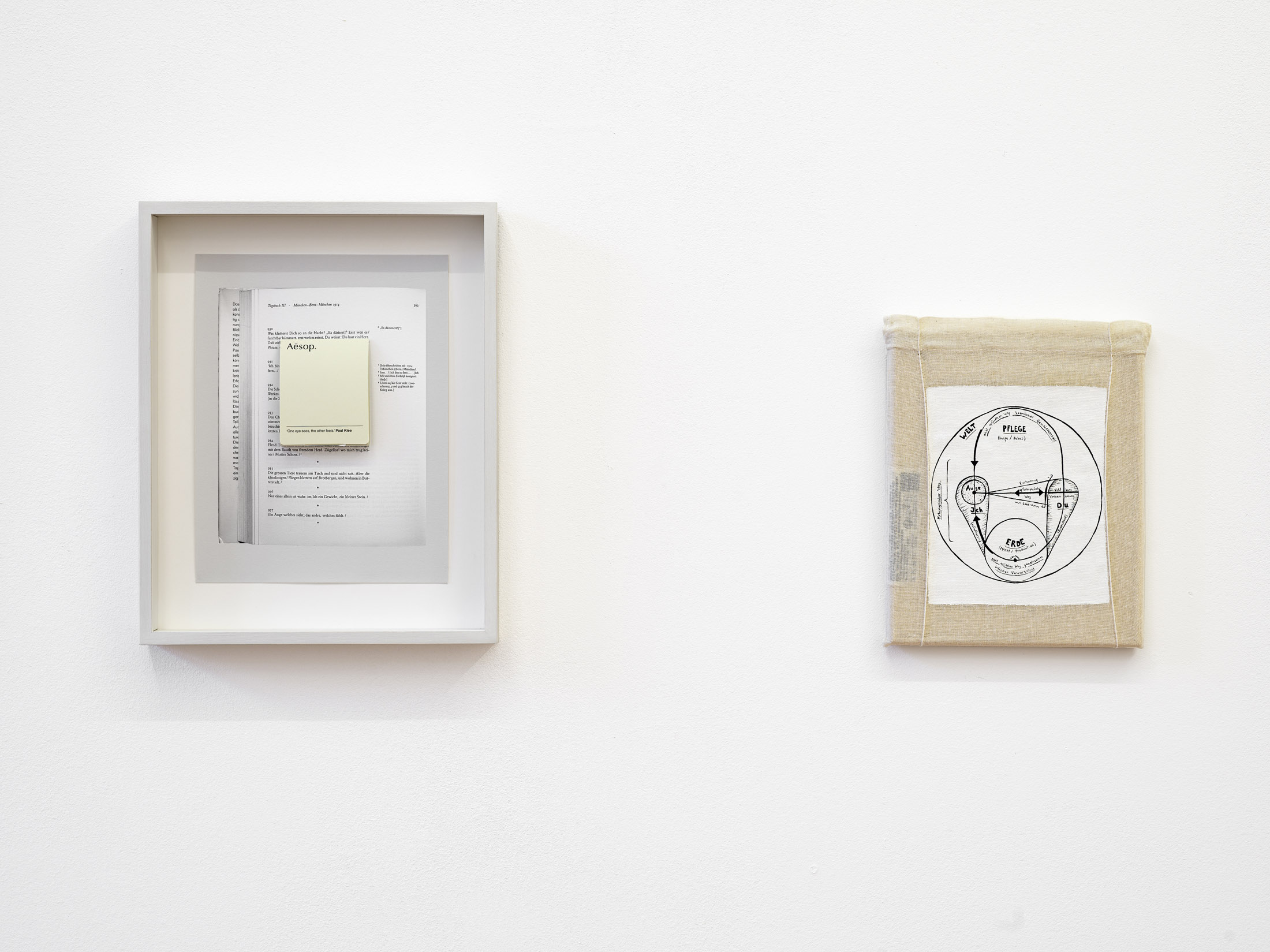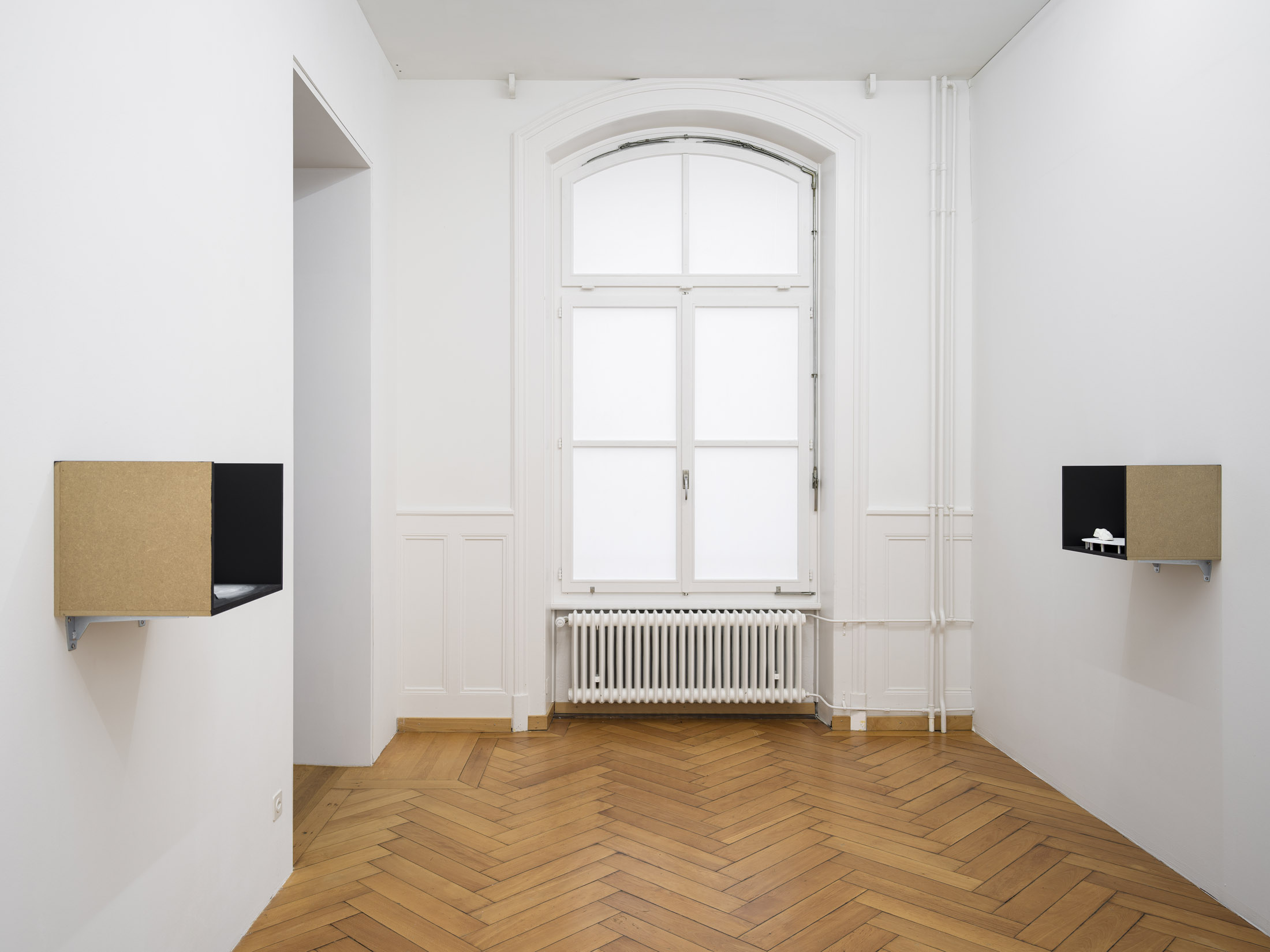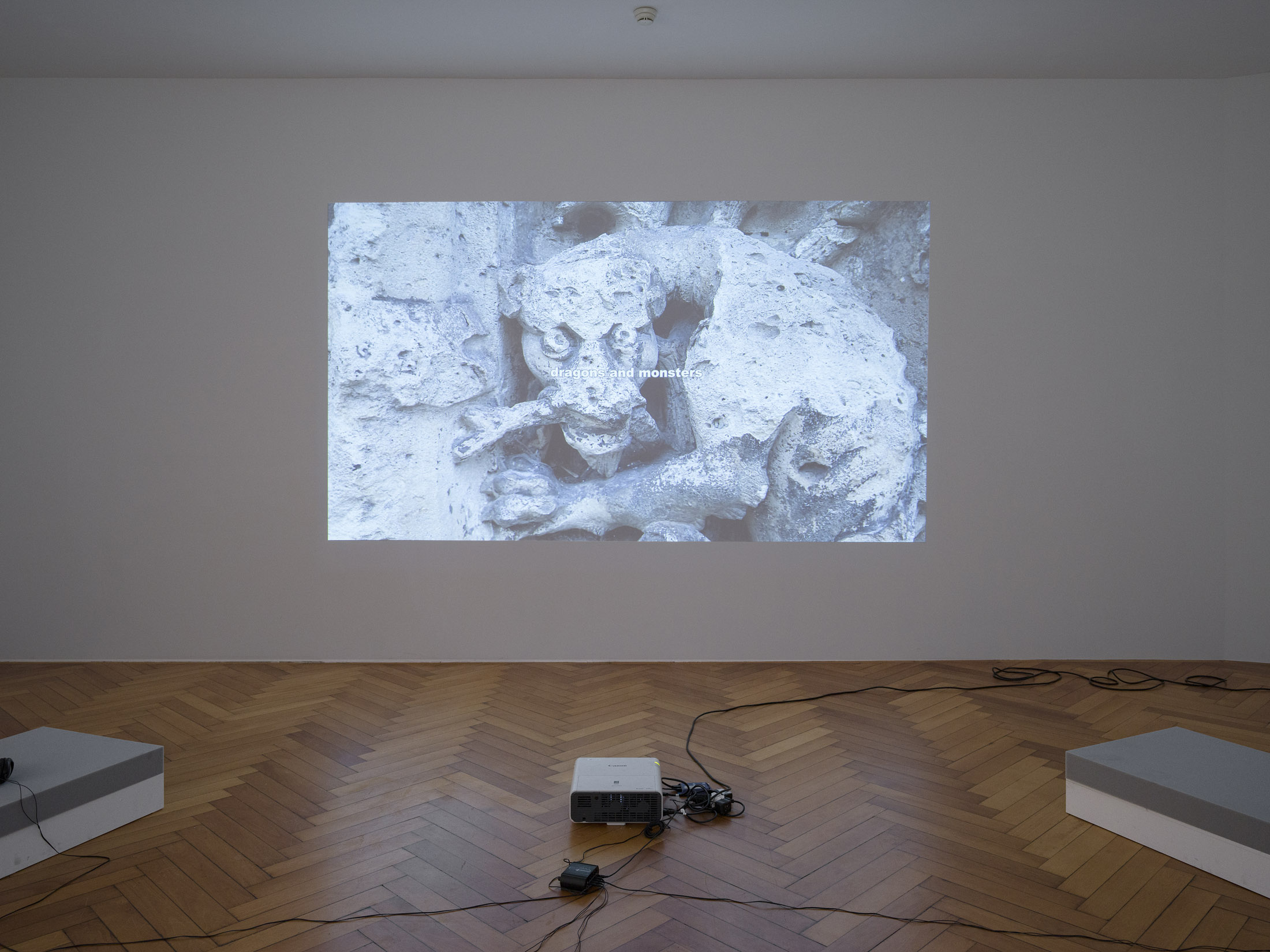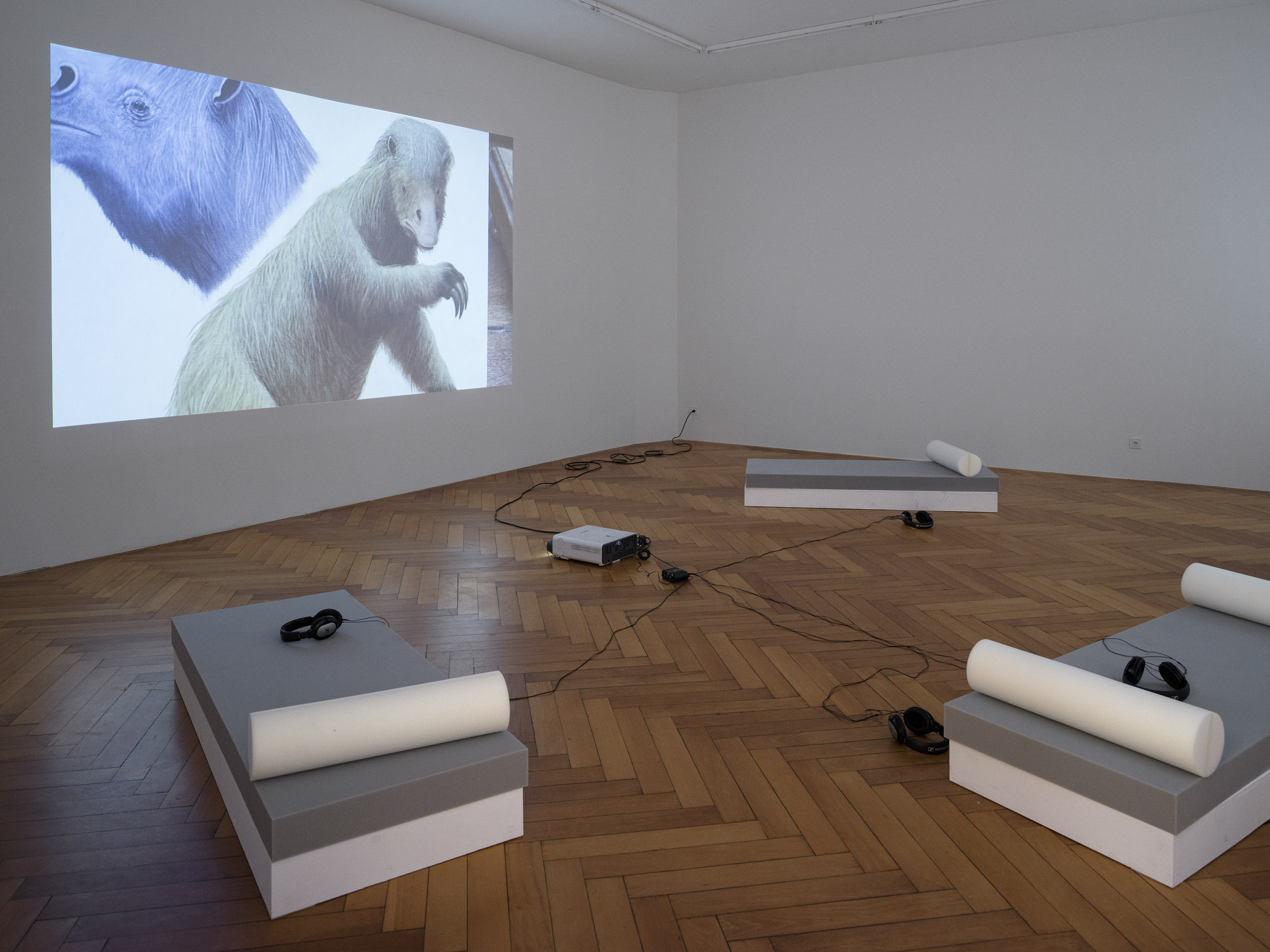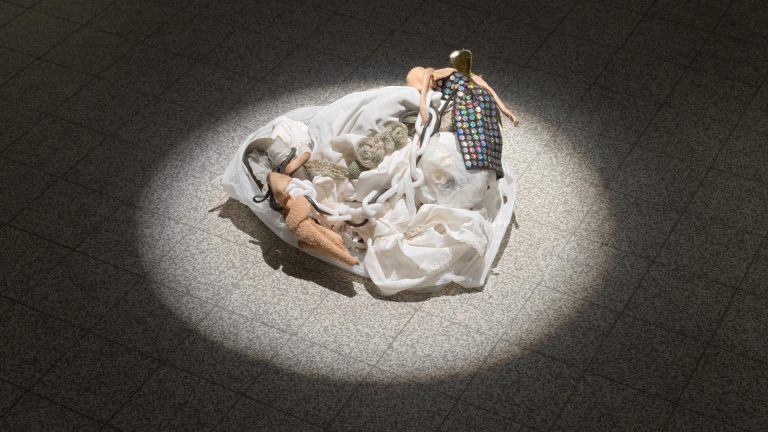Artist: Karen Amanda Moser
Exhibition title: Vision d’intérieur
Venue: Stadtgalerie Bern, Bern, Switzerland
Date: September 22 – October 21, 2023
Photography: Studio Mussano / all images copyright and courtesy of the artist and Stadtgalerie, Bern
A vision can be described as a subjective, image-based experience of something sensual, imperceptible. It can also be something imaginary, a hallucination, a sensory illusion, delusions and phantasms, or a utopia, conceptions, images of the future, or a management strategy. Visions raise the question of how internal and external worlds are interrelated; what exists even though we don’t see it, hear it, or feel it, and who still perceives it? What knowledge is internalized, what is inscribed in bodies and what remains invisible?
In her solo exhibition Vision d’intérieur, Karen Amanda Moser juxtaposes two stage-set models of Samuel Beckett’s play Waiting for Godot. No human interaction; the waiting as the focus. The stage set hardly changes from the first act to the second, apart from several flowers blossoming on the tree. The artist’s work conflates the play’s temporal structure with the history of its performance, thus opening up dissonant temporalities. One model depicts the stage set from the first act of the work’s 1953 premiere in Paris; the other the second act of a later performance of the work in Avignon in 1978. A more than twenty-year span of new performances, restagings, and interpretations.
Continuities and ruptures marking one’s embedding in various histories as an individual and art producer are recurring themes in Moser’s works. The exhibition draws lines of connection between post-war Paris and the city today: her video Re-pro-duction (2023) was created during her residency this year at Cité Internationale des Arts. It is a dérive by the artist through the city’s infrastructures, museums, cemeteries, and menageries. She passes through these places of historical import, administrative functioning, or commemoration as an artist, a participant in the residency of European cultural diplomacy and cultural enrichment, as a tourist, as an individual. They chronicle change as well as control over bodies—human and non-human—that give rise to an ostensible system of order: as meta-museums of the violent history of the European expansion of capitalism. In her work Re-production, Moser creates cartographies of systems of control, visualized in the form of introspection that makes perceptible mechanisms of biological and social reproduction.
In accordance with Article L621-29-8 of the Legal Regulations on Cultural Heritage, revenue generated by the owner of the monument from advertising shall be used to finance the restoration work.
The accompanying publication APPARITION EXTÉRIEURE, created for the exhibition, documents various advertising billboards around Paris, which were made possible by article L621-29 -8. These attest to a new form of profit generated from the interplay of art, luxury goods, real estate, tourism, and cultural heritage. Conveyed in the artist’s photographic work is a direct confrontation with the conditions of art reproduction today—a further elaboration of her perceptive analysis that provides insights here into an ambivalent art system encountered during her residency in Paris.
In Vision d’intérieur, Karen Amanda Moser is concerned with the bureaucratic and legal processes around which authorship, ownership, and human relationships are organized. Ohne Titel (Rauschen) [Untitled (noise), 2023] presents video footage from a GoPro camera lost on the ocean floor. The watermark BY-NC-ND appears throughout, the most restrictive Creative Commons license regulating the conditions for reuse of works.
Karen Amanda Moser affixed an Aesop cosmetics brand label with the Paul Klee quote “One eye sees, the other feels” to a copy of a page from Klee’s journal Tagebuch III. The diptych Gemeinsame Bildwelt [Shared imagery, 2023] situates the suggestion of the journal’s contemporaneity in dialogue with brand strategies of creating value via history and heritage.
The work Silent Monitor 1-4 (2023) is named after an eponymous method conceived by entrepreneur, social reformer, and philanthropist Robert Owen (1771–1858). Owen, a campaigner against the common practice of corporal punishment at the time, introduced in his factory a form of discipline based on a validating of workers that was visible to all. As a cuboid form that morphed into a pyramid, the Silent Monitors featured four sides marked with a different color representing the worker’s rating. The disciplining and validation of one’s own work became internalized.
Karen Amanda Moser expands on the original repertoire of form and color, translating this into sculptural form that reinterprets the original and offers additional combinations that reference various labor models in contemporary capitalism. From physical factory work, to service jobs, to emotional labor, and self-management, she draws lines of connection to today’s “emotional economy,” which penetrates all areas of life as internalized, self-regulating, economic principles.
Quality Time (2023) is an ongoing work in the form of a contract the artist enters into with individual employees of the exhibiting institution. The contract stipulates that part of the exhibition budget is to be used for joint “recreational activities” between artist and employee. The work can be supplemented by additional contracts.
The artist extends heartfelt thanks for the beautiful collaboration:
Carpentry, Pascal Reimann; Curation, Luca Beeler; Curatorial Assistant, Paula Thomaka; Framing, Marc Bigler; Graphic Design, Céline Beyeler; Printing, Länggass Druck (Markus Schneider); Screen Printing, à côté (Mohéna Kühni); Sound Design, Levent Pinarci; Translation, Brit Barton / Kate Whitebread; Transportation, Andreas Egli; Technical Support, Verena Dietze.

